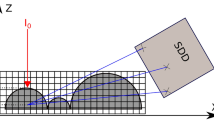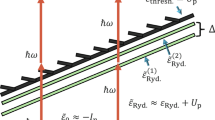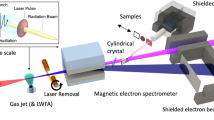Abstract
Andrew and Purton1 discovered a weak high frequency radio source, which they identified with the strong X-ray source Sco X-1. The identification was confirmed by Ables2, who also discovered significant changes in the source's flux density. A subsequent high resolution study of the region by Hjellming and Wade3 at 2,695 and 8,085 MHz showed clearly the presence of three closely spaced sources; the central source was found to be highly variable over a period of hours and was identified with the optical object associated with the X-ray source. It was noted that its flare emission tended to be considerably stronger at 2,695 MHz than at 8,085 MHz, with spectral indices of upto 1.5.
This is a preview of subscription content, access via your institution
Access options
Subscribe to this journal
Receive 51 print issues and online access
$199.00 per year
only $3.90 per issue
Buy this article
- Purchase on SpringerLink
- Instant access to full article PDF
Prices may be subject to local taxes which are calculated during checkout
Similar content being viewed by others
References
Andrew, B. H., and Purton, C. R., Nature, 218, 855 (1968).
Ables, J. G., Astrophys. J., 155, L27 (1969).
Hjellming, R. M., and Wade, C. M., Astrophys. J., 164, L1 (1971).
Apparao, Krishna, M. V., Nature, 229, 114 (1971).
Jauncey, D. L., Nature, 230, 200 (1971).
Author information
Authors and Affiliations
Rights and permissions
About this article
Cite this article
SLEE, O., HIGGINS, C. Physical Sciences: 80 MHz Observations of the Scorpius X-1 Source. Nature 234, 210 (1971). https://doi.org/10.1038/234210a0
Received:
Issue date:
DOI: https://doi.org/10.1038/234210a0



